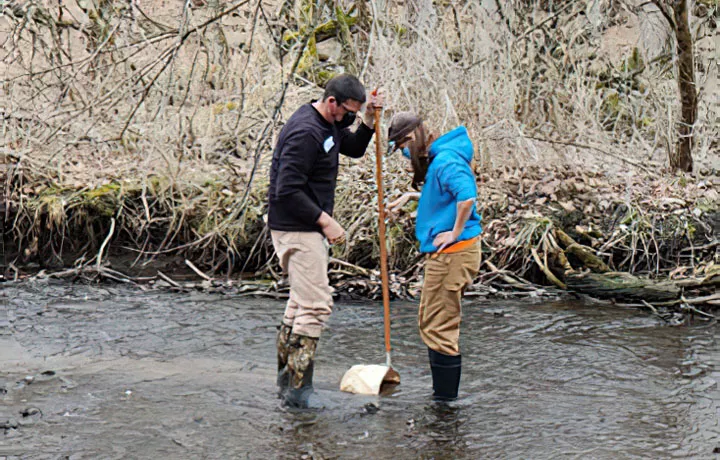| March 2024 |

By Dave Pittman
If you love Nature it is a joy to learn about it.
One of the overlooked aspects of Mother Nature is the creatures that live in the small streams. Yet the presence and the relative population of these creatures is an indication of the health and quality of the water. The Illinois RiverWatch, a citizen scientist program, will offer a one-day training session in Peoria on Sunday, April 21st, on how to conduct scientifically valid surveys of aquatic creatures. Upon completion of the course, you will be qualified to be a RiverWatch water monitor and participate in its state-wide water survey.
The training begins with a 3–4 hour classroom session with samples and microscopes, in which you learn to identify critters. In the afternoon you will to go into the field with a team for 3–4 hours, survey an aquatic habitat, collect some bugs, then bring them indoors to identify and create creature lists of what you found. The cost is $50 a person. Tools are provided as well as lots of help in getting the measurements and identification consistent.
Find out more about the training session and how to register.
RiverWatch measures 37 different organisms, including worms, crustaceans, mollusks, and insects. It has lots of ID booklets to help with this. There are usually 10–20 different species depending on the stream quality and include dragonflies, alderflies, mayflies, stoneflies, caddisflies, midges, beetles, snails, worms, freshwater clams, mussels and crayfish. These are all called benthic macroinvertebrates (don’t try that one in Scrabble).
Critters that live at least part of their lives in or on the bottom of a body of water (benthic) come in lots of different shapes. Their population density changes over time which can teach us about the water quality of streams. RiverWatch measures the ones you can see with your eye (macro), although microscopes and magnifying glasses are very, very helpful. These creatures do not have internal skeletons but either have nothing or a hard exoskeleton (invertebrates).
Like most insects, the ones monitored by RiverWatch have a series of growth phases. Complete metamorphosis describes the organism as it changes from egg to larvae to pupa into adult. Incomplete metamorphosis involves eggs to nymph into adult.
Because these critters pretty much stay in one place most of the time usually over a year, they provide a unique window into a stream’s physical and chemical condition over time. They are easy to sample, usually abundant. They are a critical part of the aquatic food web, a vital link connecting aquatic plants, algae and leaf litter.
A RiverWatch survey require a stream that’s not too big, not to small and can be measured for many years. Usually less than a foot deep with slow to moderate flow that can be accessed and measured for many years. Measurements must be taken in a very specific way so data can be compared with a reasonable degree of consistency. Singing Woods stream, for example, is a good size and has cool stuff like riffles and runs and pools. It was actually measured in the 1990s by Park District staff and volunteers. Thanks to data compiled by RiverWatch, the exact location and results of the previous assessments can be found, enabling long-term studies.
Maybe you will be one of the RiverWatch volunteer team, but even if you don’t you will have learned a great deal about your environment.